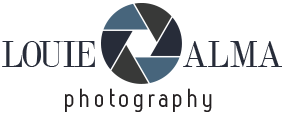Foolproof Wildlife Photography Fundamentals (VIDEO)
If you’re struggling to capture photographs that are just as just as spectacular as your wildlife subjects, we’re going to change all that today with five practical tips from an Australian pro designed for beginners and experience shooters alike. These techniques are practical, not theoretical, and “actually work in the real world.”
Instructor And Rouse is an awarding photographer who travels the globe in search of that elusive perfect shot, and he explains today’s 14-minute episode like this: “I share the key fundamental that have shaped my career— fieldcraft, blending techniques, and creative thinking to help you get closer to the images you really want to make.”
This handful of simple tips covers both technical and creative matters. His first tip is for those of you who aren’t sure about which exposure mode to use, and his unequivocal response is that for this particular genre “shutter speed is king.” Rouse then demonstrates how put this key concept to use.

Rouse is just emphatic about tip #2 and he provides a quick rundown of why composition is just as important as shutter speed. He pulls up several convincing example for framing scenes properly in the camera, rather than relying upon creative cropping during post processing. Rouse says he relies upon a golden mantra that goes like this: “If you’re not going to put it on your wall, don’t take it.”
Next on the list is the notion of keeping wildlife photography fun, and Rouse insists that the best way to do this is by specializing. In other words, “You’ll learn nothing by photographing one species one day, another the next day, and yet another after that.” This means sticking with a subject that you especially enjoy and practice refining your skills.
This thoughtful approach will not only boost your confidence, bit it will enable to develop a recognizable style off your own. There are two more transformational suggestions as this video proceeds, and Rouse promises that they keep you from missing the moments that matter.

Once you get the hang of it, and it doesn’t take long, the quality of your wildlife images will grow by leaps and bounds—whether you’re shooting in the forest, at a nearby nature reserve, or even on safari.
If wildlife photography strikes your fancy be sure to visit Andy’s YouTube channel often because there are many more how-to videos for upping your game.
And don’t miss our earlier tutorial from a very successful Australian nature and landscape photographer who demonstrates how to unlock the power of Lightroom’s Clarity, Texture, and Dehaze tools.





